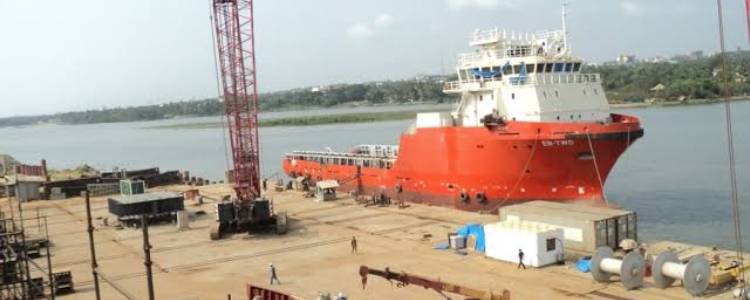CORPORATE ADDRESS
No.18, Plot 209, 1st Floor, Atlanta Building, Jamnalal Bajaj Marg, Nariman Point, Mumbai 400 021

Bulk carriers are vital for transporting unpackaged bulk cargo, like grain, coal, and ore. Ranging from small Handysize to large Capesize vessels, they vary in size and capability. Handysize and Handymax bulk carriers, comprising 70% of the fleet, have capacities from 15,000 to 48,000 DWT. Panamax ships, fitting Panama Canal locks, carry 65,000 to 80,000 DWT, while Capesize, the largest, handle 110,000 to 200,000 DWT. Bulk carriers play a crucial role in global trade, with the Baltic Dry Index reflecting their demand and the health of the freight industry.
Ferries including barges, are essential maritime vessels designed for transporting passengers, vehicles, and cargo across bodies of water. They come in various sizes and configurations to accommodate different routes and passenger capacities. Ferries provide vital links for communities, islands, and regions, offering a convenient and reliable mode of transportation for both passengers and goods. Barges, often used for freight transport, are flat-bottomed vessels primarily towed by tugboats, carrying bulk cargo, containers, or vehicles along inland waterways or coastal routes. Ferries and barges play a crucial role in facilitating transportation and commerce, contributing to the economic and social connectivity of regions worldwide.
General cargo vessels are versatile maritime vessels designed to transport a wide variety of goods, ranging from packaged goods to breakbulk cargo. They come in different sizes and configurations to accommodate diverse cargo types and routes. These vessels play a crucial role in global trade, facilitating the transportation of goods between ports worldwide. General cargo vessels are essential for maintaining supply chains and ensuring the efficient movement of goods across oceans and waterways.
Inland water transport vessels operate on rivers, canals, and lakes, facilitating the movement of goods and passengers within a country's interior. These vessels vary widely in size and design, from small barges to larger riverboats and pusher tugs. Inland water transport offers a cost-effective and environmentally friendly alternative to road and rail transport for bulk cargo, containers, and passengers. It plays a vital role in regional economies, connecting remote areas to major trade hubs and supporting industries such as agriculture, manufacturing, and tourism.
Offshore Support Vessels (OSVs), also known as Offshore Supply Vessels, are specialized ships crucial for operations on the ocean, serving various purposes like platform support, anchor handling, construction, maintenance, and more. These versatile vessels transport supplies, materials, and personnel from land to offshore rigs and ships, playing a vital role in the logistical servicing of offshore platforms and subsea installations. OSVs are designed to be efficient, resilient, and high-performance, meeting the demands of the oil and gas industry as well as the growing offshore wind sector. They are essential for ensuring the smooth functioning and maintenance of offshore equipment and installations
River Sea Vessels (RSVs) are a novel vessel category blending inland and coastal capabilities, aimed at versatile operations in interconnected waterways and coastal regions. Governed by specific regulations, they ensure safety and efficiency in design and operation, Square Port. offering RSVs with a 5000 DWT capacity for both inland and coastal navigation. Equipped with centralized machinery and cargo holds, these vessels accommodate various cargoes, demonstrating adaptability for diverse applications. RSVs present an appealing solution for businesses navigating regions with intertwined water networks, offering flexibility and compliance with maritime standards.